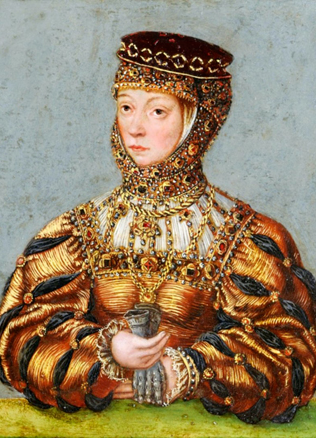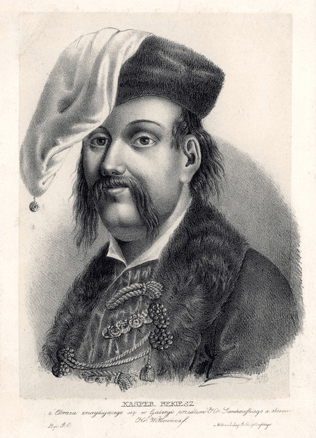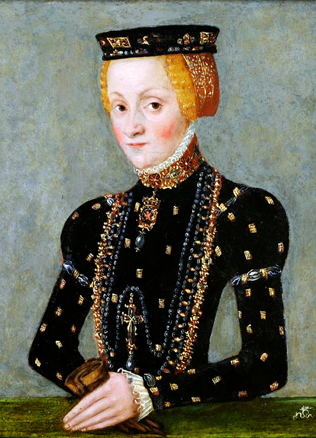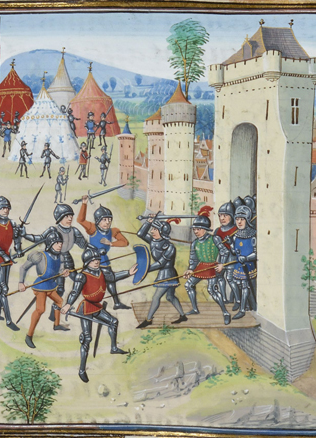Gediminas’ special friend: friends and friendship in the Middle Ages
Do You Know?
In 1322, the counsellors of the city of Riga wrote to their ally, the pagan ruler Gediminas complaining about the wrong done by the brothers of the Teutonic Order and asking him for support. This letter contains a postscript in which the counsellors speak about the Duke of Pskov and a special friend of Grand Duke Gediminas (amicus specialis) “lord Dovydas.” It is known from other sources that Dovid was a Lithuanian nobleman, the Elder of the Castle of Grodno who had a large estate in those environs where an armed company of the Order killed 38 people and drove away 100 horses with themselves during one of the marches. On commission of the Grand Duke Dovydas assaulted the lands of Prussia, Livonia and Mazovia more than once, and in 1326, he led Gediminas’ army to the land of Brandenburg and was killed there. What does the hint about special friendship between the ruler and the nobleman, Gediminas and Dovid, made by the contemporaries mean? It is likely that this statement about special relations between these two people misled the chronicler Maciej Stryjkowski who wrote in the 16th century to such an extent that he, wanting to explain that, “attributed” Gediminas imaginary daughter Dovid’s wife.
Governance of the state in the “circle of friends”
If we look through the sources of that time more carefully, we shall find more such “friends” (Lat. amici, Germ. frunde, Rus. приятели). It would suffice to remember Gediminas’ unsuccessful negotiations over the baptism in 1323–1324 when, according to the report of the Pope’s envoys, the Grand Duke shed tears demonstratively in the presence of his “friend and relative” Erudas. Rulers and noblemen constantly appear in the medieval sources surrounded by their “friends and relatives”. The impression forms that this was a network of communications that included the entire society, and the ties of personal friendship between the ruler and his noble subordinates played an exceptional role in the life of the state. The impression is not wrong.
Friendship was an important social structure of the early monarchy.
Informal contacts supplemented the government relations, which are referred to in the sources as “friendship.” Mindaugas’ “friends” took revenge on Treniota for killing the ruler, the “friends” bought back Mindaugas’ nephew Duke Lengvenis from the captivity in Livonia for 500 half-marks; in 1387, on granting his brother Skirgaila the dukedom of Trakai, Jagiełło promised “to obey him more than all friends and brothers.” Vytautas, in his “Complaint against Jagiełło and Skirgaila” written around 1390 characterised repressions carried out against the persons of his group as follows: “Duke Jagiełło deprived all my remaining friends of their native lands.” Many examples of this type can be found in the sources.
An enemy can be a friend too
Friendship ties could relate people of different, even conflicting countries. The commander (ger. Komtur) of Cēsis (the manager of the castle and its district) was a “friend” of the Latgalian Rusin who fought against the Livonian knights at the beginning of the 13th century, many Grand Dukes of Lithuania had friends in the state of the Order. For example, Kęstutis maintained friendly relations with the commander Günter Hohenstein of Branderburg who christened Kęstutis daughter Danutė who married into Masovia. Friendly ties expanded significantly a network of family ties.
It is not by chance that sometimes the conceptions of “relatives” and “friends” were used as synonyms in the sources.
The rulers needed this network of “friends” having in mind a constant problem of loyalty: the noblemen who did not belong to the “ruling family” could be trusted more than the relatives who concocted plans of seizing sovereign power. As the hints found in the sources show, personal ties could acquire a certain institutional form. The Chronicle of Lithuania writes that at the end of the 14th century, during the internal conflict, Vytautas’ brother-in-law Duke Jonas Algimantas sought to “make friends” with Jagiełło, and as a sign of friendship presented Jagiełło with a gold belt.
The “friendly” politics
It was not only the rulers but also the magnates of the country who formed their authority on the basis of “friendship ties.” The associates recruited from the “free ones” in the environs constituted the escort, which played the role of both the “administration” and the “military retinue”. In 1360, Eigintas, a Lithuanian magnate from Upytė, threatened the Master of Livonia with his “friends”, and in 1365, the nobleman Buškys relied on his “friends” during his military expedition. Perhaps these social relations were implied in Vytautas’ argument with the authorities of the Order over the “free” peasants who had escaped, when the peasants – “friends” of the noblemen are mentioned. In the middle of the 15th century, the magnates of the Grand Duchy of Lithuania sometimes handed the land over to the noblemen of their milieu “not as to a servant” but “as to a friend.” Speaking about the contents of such friendship, one can form the impression from the data presented in the sources that conditions of friendship provided for mutual assistance, taking care of the relatives, and the inviolability of the estates. Intermediation of close friends or the guarantee was the best means to win back the Ruler’s favours. Later the phenomenon of remembrance started when friends were expected to say prayers for the well-being of the soul after death. The conception of a “friend” was used in political correspondence between the states not only in a rhetoric sense. For example, in the 15th century, the Masters of the Order called Grand Dukes of Lithuania and the magnates in their letters their “special dear friends”. This testified to peaceful and stable interstate relations or at least to the aspirations to normalise these relations.
Do You Know?
Hence, in the Middle Ages “friendship” was a wide conception: it could mean both a close emotional tie between two persons and a formal political union (both in one’s own country and beyond its borders), and close kinship. It was quite often that all these meanings intertwined, friends became political allies by establishing friendship and consolidating it by marriages of their sons and daughters. In this way a network of horizontal personal ties appeared, which assured a feeling of security and well-being for the people in the turbulent times.
Literature: Rimvydas Petrauskas, Tolima bičiulystė: asmeniniai Vokiečių ordino pareigūnų ir Lietuvos valdovų santykiai, in: Kryžiaus karų epocha Baltijos regiono tautų istorinėje savimonėje, Šiauliai, 2007, p. 206–222.
Rimvydas Petrauskas



